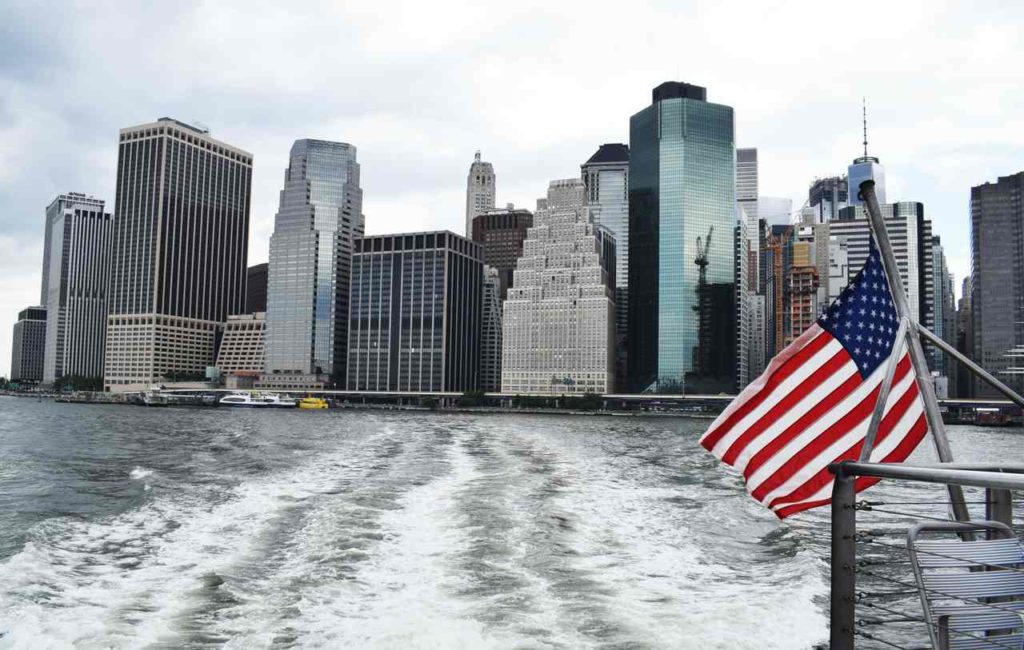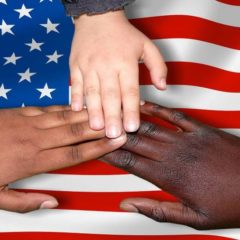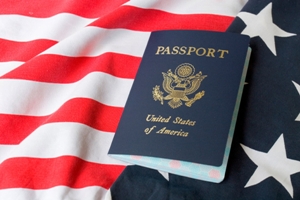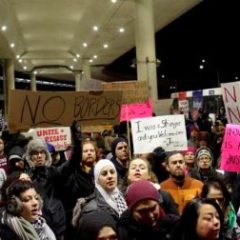Migration as a Phenomenon. General information on Western Vectors of Migration from Ukraine
Ever since Ukraine turned from a Soviet Union republic into a sovereign and independent state, many of its people have been thinking about building a better future abroad. First of all, let me tell you that migration is not an act of despair, but a form of typically human behavior that (for the records) rests on scientific grounds. People migrate to ensure better living standards for themselves and their children. Patriotism aside, we need to stop and look around. What country are we living in? What social standards do we have? What food safety and standards are we provided with? What kind of education can we provide to our children? How much money can we earn to ensure all the aspects above? No hard feelings but looking at the state of this country for the past 3 (!) decades, one may think that the following words from its anthem “We shall rule ourselves in our land” were the real goal of the “Founding Fathers” when they declared independence in 1991. With that feeling of being abandoned, many people start thinking about moving from Ukraine, no matter how strong they love their motherland.
Excluding the eastern vector, the migration from Ukraine has been in two directions – the EU and the New World. Since the Orange Revolution of 2004, for millions for Ukrainians, the EU has become a buzzword and the Babylon, rich and prosperous. After 2013-2014 Revolution of Dignity and 2016 EU visa abolition, Brussels seemed to be even closer as a much and long promoted “land of milk and honey”. Yet the situation turned out that the streets of the EU cities were not paved with gold for the citizens of Ukraine who ventured to become migrants in the 27-member block. The situation with our “brethren” Baltic states and our “cousins” from the former Soviet Bloc showed that Western Europe was rather a strict and discipline-enforcing mother-in-law, rather than a good loving mother. Moreover, the latest developments in the EU political sphere show trends of nationalism and populism regaining a foothold, with these two phenomena being not good friends with immigrants. So much for the open society championed by the European leaders…
Migration to the US: Dangerous Pitfalls: Social-State Survivals in modern Ukraine as Potential Stumbling Blocks
Yet we leave politics to politicians and focus on the needs of common citizens of Ukraine willing to improve their wellbeing by means of migration. Migrants should look for those countries who see migrants as building blocks of the nations themselves. We are talking about the New World, build by migrants and for the migrants. And it is the US we are focused on. “The land of opportunities and chances!”. We all have heard that millions of times, read about it in hundreds of books and watched it in plethora of movies. As mentioned earlier, migration is predominantly based on social and economic reasons. People seek to improve their everyday lives and lay the foundation of happiness for their kin in the future. Although we are all individuals, our everyday lives are rather similar: apart from fulfilling individual professional tasks, we all need to consume food, purchase wear, keep our cars repaired and care about our health. Hence, prior to venturing to migrate from Ukraine to the US, we need to consider all these aspects and price in potential significant deviations from what we are accustomed to in this country. And here is where the dog lies.
As a former Soviet republic (no matter what the current ideology says about that period of history), Ukraine still has some elements of a social state, survival in the world of capitalism, yet still so much cherished and valued by the population many of whom (due to the reasons beyond their control) are forced to keep their heads above the water. These social state elements are materialized in the form of (partially) free or rather affordable healthcare services. You will not be released from a hospital without undergoing the entire course of treatment just because you are run of cash or your insurance cannot cover the services. True, despite all the efforts by the Democratic Party, Medicaid and Medicare services still cost the US citizens a pretty penny: out of 331 million, Medicaid is ensured only for 72.5 million. Medicare mechanism (although rather simplified under ‘Obama care’ Act) is rather complicated a mechanism, not to mention the cost breakdown: each hospital stay cost an average of $15,734, with the Medicare program covering only 20% of all hospital care costs and only for 42% of patients enrolled into hospitals for medical care. Not too optimistic, one may say. Even though the US is a country of generally wealthy people (less than 25% of employees earn less than $52,600), gaining the level of $94,700 (the average yearly salary in the US) might take quite some time. Let’s face it: a migrant is a migrant, even in the country of migrants. Moreover, the status of migrant means that you are generally limited with regard to Medicare services, hence you must price in healthcare costs without insurance, that will force you dig deep into your pockets. Simply put: if a migrant in the US, do stay healthy, although it is difficult to say nowadays, at the times of the COVID-2019 pandemic.

Higher education can be another stumbling block. It is truly expensive in the US. There are historical reasons for it. Moreover, we are talking about the capitalist society, with higher education being a serious investment (apart from the educational activity). University annual fees may range from $5,000 to $100,000 (this cost may include room and board)
The latest data shows that the figure has dropped by 5%, however, the issue of student loans is very touchy for the US student population, with student loan interest rates reaching 8.38% (in case with refinance student loans) or even 14.50% (in case with private student loans). Naturally, a migrant can submit an application for a federal direct student loan (up to 4.30%), yet you will still have to make a lavish investment in your higher education. As the financial situation in the US is getting tougher (we are facing the COVID-related problems as well as the aftermath of the Great Recession 2007-2009), getting higher education in the US is becoming more complicated. Not to mention the possibility to pay off the loan.
No wonder that the character of Michael Douglas in ‘WallStreet: Money Never Sleep’, when addressing students called them NINJA Generation: “No Income, No Job, No Assets”. At the same time, higher education in Ukraine is more or less affordable (another survival from the social-state past). Still, if you plan to stay in Ukraine, yet toy strongly believes that getting an education in the US will allow you to reach better results in this country, you may consider applying for a student visa. At the same time, higher education in Ukraine is more or less affordable, with some universities charging tuition fees around $1,000 to 3 000 per year (another survival from the social-state past). Such a low price for education can be an impossible dream for any American student accustomed to very high university tuition fees.
Speaking about the list of the social-state survivors and comparing them with the reality of the capitalist society of the US, one cannot but mention housing. In this country, over 95 percent of houses are private property. You can say whatever you what that the housing stock, that it requires urgent renovation, that almost 10% of it is dilapidated, yet in Ukraine people own it. What is the situation in the US? It is commonly known that in the US, Wall Street is the landlord, especially after the Great Recession. A similar situation is with a rental fee: in Ukraine, a monthly rental fee ranges from $700 (1-room apartment) to $3,000 (3-room apartment). In the US, the situation is tougher: as of 2019, the rage was from $1,078 (1-room apartment) to $1,343 (2-room apartment), with the rental fees witnessing a surge in 40 out of 51 US states. Statistics show that Ukrainian citizens spend 78.56% less on rental payments compared to their US peers.
Migration to the US: Land of Developed Capitalism has Rabbits in Uncle Sam’s Hat
There is no need to panic though. Healthcare-related financial issues, higher education, or housing are not the end of the world and should not be portrayed as barriers to immigration into the US. As a matter of fact, it is where the main financial issues might end. The US is not a third-world country with infectious diseases spreading massively and regularly. The country’s sanitation sector ensures no massive sparks occur; as for the infectious diseases, you are the one to mind our hygiene and personal protection.
There are real bright spots when talking about the US. Indeed, some statistical reports state that the cost of living in the US is 151.71% higher than in Ukraine (the figure excludes rental payments), yet it means that the level of income in the US is much higher. Have a look at the figures (as of 2018): $1,693.557 for a household in Ukraine compared to $31,454.000 in the US. Isn’t that a splendid counterbalance against the inequalities mentioned earlier? Isn’t it the larger income that the migrant’s strife for when abandoning their native countries and local communities? Do not forget the uncontested economic value of the US currency, i.e. the amount of goods the can be traded for a single unit of currency. Thus it should not be surprising that small and mid-value banknotes are the most widespread in the US in terms of circulation: $1 bill represents more than 31% of the entire USD circulation followed by $20 bill. Note that $100 in the US is used as a so-called “home deposit” instrument (i.e., to store value). The situation in Ukraine is upside down. The economic value of the national currency, UAH, is undermined due to inflation that is galloping no matter what macroeconomic readings demonstrate. This inflation literary “eats” UAH economic value, making the currency value shrink. As a result, in Ukraine, the most widespread banknotes (apart from UAH1) are UAH 200 and UAH 500! So if you have a dream to fill your family coffers with really valuable currency (while planning to stay citizen of Ukraine) through a temporary job in the US, you may consider a US H-1B visa as a tool for migration to the US.
The US in Troubled Times
Earlier we spoke about some forms of social-state survival in Ukraine that made some aspects of living more attractive than in the US. Well, we finally can identify one clear-cut advantage of living in a society of developed capitalism. We are talking about the banking sector and its customer-oriented bouquet of financial tools, e.g. credit card programs. The same is about jobs: new jobs have been witnessing a clear-cut bullish rally for the past 10 years, and even after the first wave of the corona, we are seeing a rebound. Jobs are what migrants are after to ensure their better lives. The US is going out of the woods, so those considering migration into the USA have plenty of data to analyze.
Let me also remind you that in the US you will be able to purchase a car rather cheaper than in Ukraine; see for yourself: used cars under $12,000 in the US, and used cars starting from $23,000 in Ukraine!
Making one’s Choice to Migrate to the US
So, if you have made up your mind in favor of migrating to the US, you need to consider instruments through which you can migrate. In this case, all you need to do is to apply for a green card. It can be done either through a spouse, or a green card lottery.
Drawing this long story short, we can conclude that the US is the colossus, and not on the clay legs as some commentators (like Bloomberg’s John Micklethwait) try to portray it. The American dream is good, but not as good as some people imagine. Yes, we cannot whitewash the negative situation in this sector, as Capital One Financial Corp. (the third-largest creditor in the country) announced the reduction of credit card limits. We also need to remind that more than half of the US banking institutions introduced harsher measures for credit card operations. However, these grim figures were the result of COVID-2019, and not due to the economic downturn. Hence, you, at least, can try to reach that very American dream. The choice is yours.






